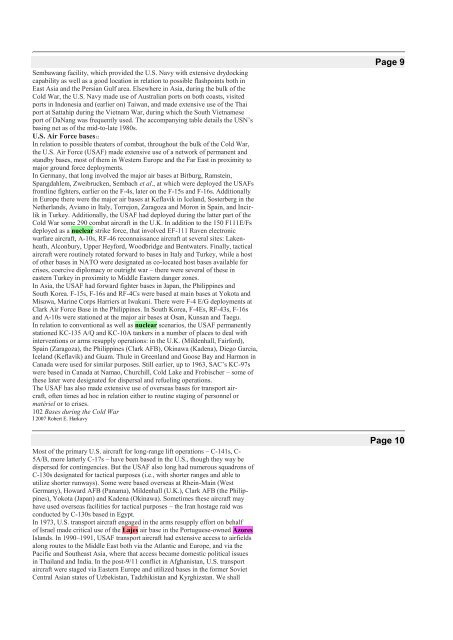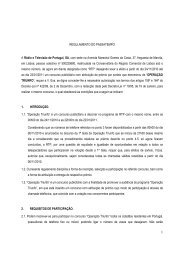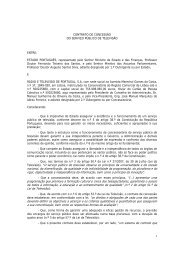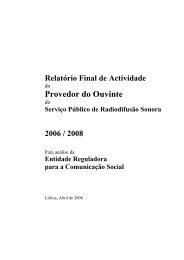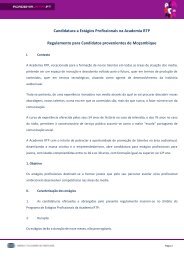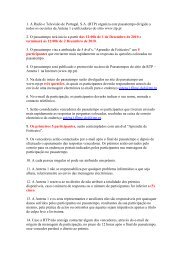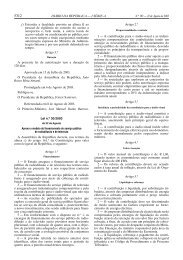6 Bases during the Cold War
6 Bases during the Cold War
6 Bases during the Cold War
You also want an ePaper? Increase the reach of your titles
YUMPU automatically turns print PDFs into web optimized ePapers that Google loves.
Sembawang facility, which provided <strong>the</strong> U.S. Navy with extensive drydockingcapability as well as a good location in relation to possible flashpoints both inEast Asia and <strong>the</strong> Persian Gulf area. Elsewhere in Asia, <strong>during</strong> <strong>the</strong> bulk of <strong>the</strong><strong>Cold</strong> <strong>War</strong>, <strong>the</strong> U.S. Navy made use of Australian ports on both coasts, visitedports in Indonesia and (earlier on) Taiwan, and made extensive use of <strong>the</strong> Thaiport at Sattahip <strong>during</strong> <strong>the</strong> Vietnam <strong>War</strong>, <strong>during</strong> which <strong>the</strong> South Vietnameseport of DaNang was frequently used. The accompanying table details <strong>the</strong> USN’sbasing net as of <strong>the</strong> mid-to-late 1980s.U.S. Air Force bases12In relation to possible <strong>the</strong>aters of combat, throughout <strong>the</strong> bulk of <strong>the</strong> <strong>Cold</strong> <strong>War</strong>,<strong>the</strong> U.S. Air Force (USAF) made extensive use of a network of permanent andstandby bases, most of <strong>the</strong>m in Western Europe and <strong>the</strong> Far East in proximity tomajor ground force deployments.In Germany, that long involved <strong>the</strong> major air bases at Bitburg, Ramstein,Spangdahlem, Zweibrucken, Sembach et al., at which were deployed <strong>the</strong> USAFsfrontline fighters, earlier on <strong>the</strong> F-4s, later on <strong>the</strong> F-15s and F-16s. Additionallyin Europe <strong>the</strong>re were <strong>the</strong> major air bases at Keflavik in Iceland, Sosterberg in <strong>the</strong>Ne<strong>the</strong>rlands, Aviano in Italy, Torrejon, Zaragoza and Moron in Spain, and Incirlikin Turkey. Additionally, <strong>the</strong> USAF had deployed <strong>during</strong> <strong>the</strong> latter part of <strong>the</strong><strong>Cold</strong> <strong>War</strong> some 290 combat aircraft in <strong>the</strong> U.K. In addition to <strong>the</strong> 150 F111E/Fsdeployed as a nuclear strike force, that involved EF-111 Raven electronicwarfare aircraft, A-10s, RF-46 reconnaissance aircraft at several sites: Lakenheath,Alconbury, Upper Heyford, Woodbridge and Bentwaters. Finally, tacticalaircraft were routinely rotated forward to bases in Italy and Turkey, while a hostof o<strong>the</strong>r bases in NATO were designated as co-located host bases available forcrises, coercive diplomacy or outright war – <strong>the</strong>re were several of <strong>the</strong>se ineastern Turkey in proximity to Middle Eastern danger zones.In Asia, <strong>the</strong> USAF had forward fighter bases in Japan, <strong>the</strong> Philippines andSouth Korea. F-15s, F-16s and RF-4Cs were based at main bases at Yokota andMisawa, Marine Corps Harriers at Iwakuni. There were F-4 E/G deployments atClark Air Force Base in <strong>the</strong> Philippines. In South Korea, F-4Es, RF-43s, F-16sand A-10s were stationed at <strong>the</strong> major air bases at Osan, Kunsan and Taegu.In relation to conventional as well as nuclear scenarios, <strong>the</strong> USAF permanentlystationed KC-135 A/Q and KC-10A tankers in a number of places to deal withinterventions or arms resupply operations: in <strong>the</strong> U.K. (Mildenhall, Fairford),Spain (Zaragoza), <strong>the</strong> Philippines (Clark AFB), Okinawa (Kadena), Diego Garcia,Iceland (Keflavik) and Guam. Thule in Greenland and Goose Bay and Harmon inCanada were used for similar purposes. Still earlier, up to 1963, SAC’s KC-97swere based in Canada at Namao, Churchill, <strong>Cold</strong> Lake and Frobischer – some of<strong>the</strong>se later were designated for dispersal and refueling operations.The USAF has also made extensive use of overseas bases for transport aircraft,often times ad hoc in relation ei<strong>the</strong>r to routine staging of personnel ormatériel or to crises.102 <strong>Bases</strong> <strong>during</strong> <strong>the</strong> <strong>Cold</strong> <strong>War</strong>İ 2007 Robert E. HarkavyMost of <strong>the</strong> primary U.S. aircraft for long-range lift operations – C-141s, C-5A/B, more latterly C-17s – have been based in <strong>the</strong> U.S., though <strong>the</strong>y way bedispersed for contingencies. But <strong>the</strong> USAF also long had numerous squadrons ofC-130s designated for tactical purposes (i.e., with shorter ranges and able toutilize shorter runways). Some were based overseas at Rhein-Main (WestGermany), Howard AFB (Panama), Mildenhall (U.K.), Clark AFB (<strong>the</strong> Philippines),Yokota (Japan) and Kadena (Okinawa). Sometimes <strong>the</strong>se aircraft mayhave used overseas facilities for tactical purposes – <strong>the</strong> Iran hostage raid wasconducted by C-130s based in Egypt.In 1973, U.S. transport aircraft engaged in <strong>the</strong> arms resupply effort on behalfof Israel made critical use of <strong>the</strong> Lajes air base in <strong>the</strong> Portuguese-owned AzoresIslands. In 1990–1991, USAF transport aircraft had extensive access to airfieldsalong routes to <strong>the</strong> Middle East both via <strong>the</strong> Atlantic and Europe, and via <strong>the</strong>Pacific and Sou<strong>the</strong>ast Asia, where that access became domestic political issuesin Thailand and India. In <strong>the</strong> post-9/11 conflict in Afghanistan, U.S. transportaircraft were staged via Eastern Europe and utilized bases in <strong>the</strong> former SovietCentral Asian states of Uzbekistan, Tadzhikistan and Kyrghizstan. We shallPage 9Page 10


